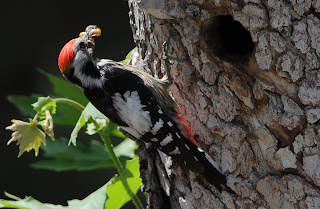I hope you enjoy your visit, please leave comments on the pictures you like. phillip.hasell@ntlworld.com
Saturday, 30 June 2012
Alpine swift
I was lucky enough to find this Alpine swift at Bempton cliffs yesterday, not a great image but a nice record. Les & I had it down to about ten feet when it first appeared, but that was the closest it came. I have some other images but this was the best.
Saturday, 2 June 2012
Green woodpecker
I had heard from two sources that this bird was regularly showing in front of the hide at The Lodge and toddled off to see what I could get. Another photographer was there and told me he had come for the same reason and he had been waiting half an hour without any luck. Ten minutes later he said he was giving up and was sure that as soon as he left the bird would turn up.................and he was right, it stayed in the longer grass for a lot of the time, feeding, but it did show for a few pictures.
Friday, 1 June 2012
The Lesvos pictures for 2012.
Our trip to Lesvos this year is summarised in this and the following twenty four sections, I thought the picture appropriate as this is the sound you hear all over the island, the jangling call of the Corn bunting.
Bee eaters
Definitely one of my favourite species, colourful, acrobatic, and a delight upon the eye, all these pictures were taken alongside the East river near Skala Kalloni. The first picture is of the female excavating her nest, the second was with her mate. Picture three is the classic view with a bee.
Lesvos wildlife
I wanted a nice picture of the Black headed bunting, on our first trip here they posed right beside the car, but on my two trips with a camera they refused stubbornly to oblige so I was happy to get this image on my last but one day. the Spanish sparrow male was one of the many birds we saw harvesting the large numbers of caterpillars on the fields alongside the Kalloni salt pans. They all seemed to take their catches to the road to beat them to death and then parcel upn the remains to feed to a waiting chicks. The snail caught my eye because of its blue colouration beneath its skin.
Middle spotted woodpecker
This pair of woodpeckers certainly chose a site that I found strange for a bird that prefers 'privacy' as it was on a crossroads opposite a bus stop. I was told that if you sat at the bus stop you would put them off visiting the nest so Les and I took a leaf out of the woodpeckers book and hid behind a tree to watch and they fed the young. I was impressed with the speed that they found insects in the trees as they seemed to return very quickly with a full beak as can be seen in the pictures
Garganey and Black winged stilt
The drake Garganey is a handsome bird and normally very wary of humans but like many Lesvos visitors this was very confiding. The Black winged stilts are also very easy to approach using ones vehicle.
Plovers and stints
The first two shots are of Little stints, Europes smallest waders alongside the Temmincks stints which eluded my endeavours to get a decent picture of them. Picture three is of a little ringed plover, with it's smart and diagnostic yellow eye ring. The last picture shows a Kentish plover (something of a misnomer) which had youngsters buzzing around like cotton pads on stilts, sadly not in close range for me.
Sandpipers
A small selection of the sandpipers I photographed are shown above, the first is a Marsh sandpiper, the next two are wood sandpipers and the last two are Curlew sandpipers coming into full summer plumage and they did look smart. It is easy to envisage the difficulty in spotting them on some lonely moorland in those colours.
Rock nuthatch
These were taken in the Potamia valley although we saw the nuthatches in all the rocky areas of the island, we came across one family group with quite a few large and noisy youngsters in attendance. The pair in the pictures had a nest right beside a track and we were able to park and use the car as a hide and the male completely ignored us as we watched, going about feeding the youngsters in the nest and singing from the top of the rock under which they had 'built' their adobe type dwelling.
Lesvos owls
These were all taken in a built up area, near a junior school and some flats, the owls were roosting and nesting in some very large eucalyptus trees and they were great to see. As soon as you showed your face, the four Long eared owlets immediately checked you out until something more interesting caught their eye. the parents were always near at hand in case a predator appeared. The Scops owl in the top picture was wonderfully camouflaged, and anyone wanting to 'find' one roosting had a hard time, luckily I was put onto these by birders who wee already on site.
Subscribe to:
Posts (Atom)

































